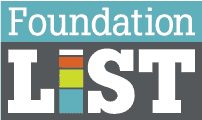Dynamic Growth and Challenges in Nonprofit and Education Sectors: Current Insights
The nonprofit and education sectors are experiencing significant growth while navigating considerable challenges in an evolving landscape. Amidst stock market instability and the anticipation of a presidential election year, these sectors have demonstrated resilience and adaptability. This blog delves into seizing opportunities and overcoming obstacles, highlighting fast-growing job roles and cities, strategic shifts to address job growth declines, and foresight needed to navigate uncertainties.
Fast-Growing Jobs and Cities in the Nonprofit and Education Sectors: Insights from the First Half of 2024
The first half of 2024 has marked a significant period of growth and opportunity within the nonprofit and education sectors. Over Q1 and Q2, we’ve seen an exciting surge in specific job roles and cities, reflecting broader trends in these vital areas of work. The dynamism and commitment seen across these sectors underscore the increasing importance of social impact and education in our communities.
In the nonprofit sector, data analysts and digital marketing specialists have been leading the pack, with job growth rates of 12% and 15%, respectively. This surge indicates the sector’s growing emphasis on data-driven decision-making and the need to connect with a broader audience through digital platforms. Nonprofits are increasingly leveraging technology to optimize operations, measure impact more effectively, and engage with donors and stakeholders innovatively.
Meanwhile, in the education sector, special education teachers and instructional designers have seen remarkable growth rates of 18% and 20%, respectively. The demand for special education teachers reflects an ongoing commitment to inclusivity and providing tailored educational experiences to students with diverse needs. Instructional designers are at the forefront of reimagining education delivery, developing engaging, effective, and accessible learning materials that cater to the digital age.
Geographically, cities such as Austin, Denver, and Boston have emerged as hotspots for growth in these sectors. Austin, with its vibrant tech scene, has become a hub for digital innovation in nonprofits, witnessing a 22% increase in nonprofit tech job openings. Denver’s focus on social entrepreneurship and sustainability has fueled a 19% growth in related nonprofit positions. Boston, with its rich educational ecosystem, has seen a 25% rise in opportunities within education technology roles, reflecting the city’s leadership in educational innovation and research.
These trends highlight the sectors’ resilience and adaptability and offer hope and opportunity for professionals seeking meaningful careers. The growth in these jobs and cities exemplifies the ongoing evolution within the nonprofit and education landscapes, driven by a shared mission to create a positive impact in society.
Challenges in the Nonprofit and Education Sectors: Decreases in Job Growth
While there has been significant growth overall, the first half of 2024 has also presented unique challenges within the nonprofit and education sectors, particularly in certain job roles and cities where job growth has seen a noticeable decline.
In the nonprofit sector, traditional roles such as event coordinators and community outreach workers have experienced a decrease in demand, with job growth rates dropping by 8% and 5%, respectively. This decline reflects a broader trend towards digital engagement strategies, as organizations shift focus from in-person events to virtual platforms and digital campaigns to reach their audiences and stakeholders.
Similarly, in the education sector, traditional roles such as textbook authors and library assistants have seen declines in job growth, with rates decreasing by 10% and 7%, respectively. The move towards digital resources and online learning environments has significantly impacted the demand for these roles, as educational institutions seek to adapt to the preferences and needs of a new generation of learners.
Cities traditionally known as centers for nonprofit and educational employment, such as Philadelphia and Cleveland, have also felt these shifts. Philadelphia has seen a 4% decline in nonprofit job postings, while Cleveland’s education sector job postings have decreased by 6%. These changes underscore the need for cities and organizations to adapt to the changing dynamics of the workforce and the economy.
Despite these challenges, these trends indicate transformation within the nonprofit and education sectors. They highlight areas where there is a need for innovation and adaptation, offering opportunities for professionals to develop new skills and for organizations to rethink their strategies to meet the evolving needs of their communities. As the sectors continue to navigate these changes, resilience, flexibility, and a forward-looking approach will be key to overcoming obstacles and finding new paths to growth and impact.
Projecting Job Growth in Nonprofits and Education for 2024: Navigating Uncertainty
As we look ahead to the remainder of 2024, the nonprofit and education sectors stand at a crossroads, shaped by the dual forces of stock market instability and the dynamics of a presidential election year. These elements introduce unpredictability, yet they also offer unique opportunities for growth and transformation within these vital fields.
In the nonprofit sector, despite challenges posed by economic fluctuations, certain roles are poised for growth, driven by the sectors’ inherent resilience and adaptability. Digital fundraising specialists and grant writers, for instance, are expected to see a job growth increase of approximately 12% and 10%, respectively. This growth is influenced by the continuing need for nonprofits to secure funding through diverse channels and to effectively communicate their impact to donors and stakeholders, especially in times of economic uncertainty.
The education sector is similarly positioned for specific areas of growth. With the ongoing integration of technology in learning, roles such as online curriculum developers and e-learning specialists are projected to grow by around 15% and 18%, respectively. This trend underscores the sector’s move towards more flexible, accessible, and diverse educational offerings, catering to the needs of students in a rapidly changing world.
Cities that have demonstrated a robust ecosystem for nonprofits and education, such as Seattle, San Francisco, and New York, are likely to continue leading in job growth. These cities’ strong technological infrastructure, combined with a culture of innovation and social impact, make them fertile ground for developing new roles and opportunities in both sectors. However, the growth in these cities will also need to navigate the challenges of living costs and the broader economic impacts of stock market volatility.
The backdrop of a presidential election year adds another layer of complexity, with potential shifts in policy and funding priorities affecting both sectors. Nonprofits and educational institutions may face uncertainties in government grants and policy support, emphasizing the need for strategic planning and advocacy.
Strategic Fundraising During Market Instability and Election Years: Lessons from Successful Nonprofits
Navigating stock market instability and the heightened political climate of presidential election years presents unique challenges for nonprofit and educational organizations. Yet, history has shown that these periods can also open up opportunities for strategic fundraising, provided organizations are agile, innovative, and deeply attuned to the concerns and motivations of their donors. By examining the strategies employed by successful organizations during similar periods, we can extract valuable lessons for nonprofits looking to secure funding in the current environment.
One notable example comes from Habitat for Humanity, which during past periods of economic uncertainty, intensified its focus on storytelling and impact communication. Recognizing that donors wanted to see tangible results, the organization highlighted specific, relatable success stories of families who benefited from their housing programs. This approach helped them maintain and even grow their donor base, with a reported increase in individual contributions by 8% during a year marked by significant stock market fluctuations.
Similarly, The American Red Cross has leveraged strategic partnerships during election years, capitalizing on the heightened public engagement. By collaborating with businesses and celebrities for fundraising campaigns, they managed to amplify their reach and impact. For instance, during a presidential election cycle, they launched a partnership with a major corporation that matched donations, leading to a 15% increase in funds raised compared to the previous non-election year.
Teach For America offers another instructive case. Facing the challenge of funding teacher placements in underserved communities during economic downturns, they diversified their funding streams by appealing to a broader range of donors, including alumni and private foundations. This diversification strategy, coupled with a clear message about the importance of education equity, especially in challenging times, resulted in a 12% growth in foundation grants during a year of notable market volatility.
These organizations demonstrate several effective strategies for fundraising during uncertain times:
- Enhanced Storytelling and Impact Communication: Making the impact of donations tangible and relatable can motivate donors to continue or increase their support, even when financial times are tough.
- Strategic Partnerships and Matching Grants: Collaborating with businesses or leveraging celebrity endorsements can broaden the reach of fundraising campaigns and provide donors with additional incentives through matching contributions.
- Diversification of Funding Sources: Relying on a mix of individual donors, corporate sponsorships, and foundation grants can help stabilize funding when one source may be less reliable due to external factors.
The lessons from these organizations underscore the importance of adaptability, clear communication, and strategic planning in navigating the fundraising challenges presented by stock market instability and presidential election years. By drawing on these examples, nonprofits and educational institutions can devise strategies that not only sustain but potentially grow their funding base in uncertain times.


